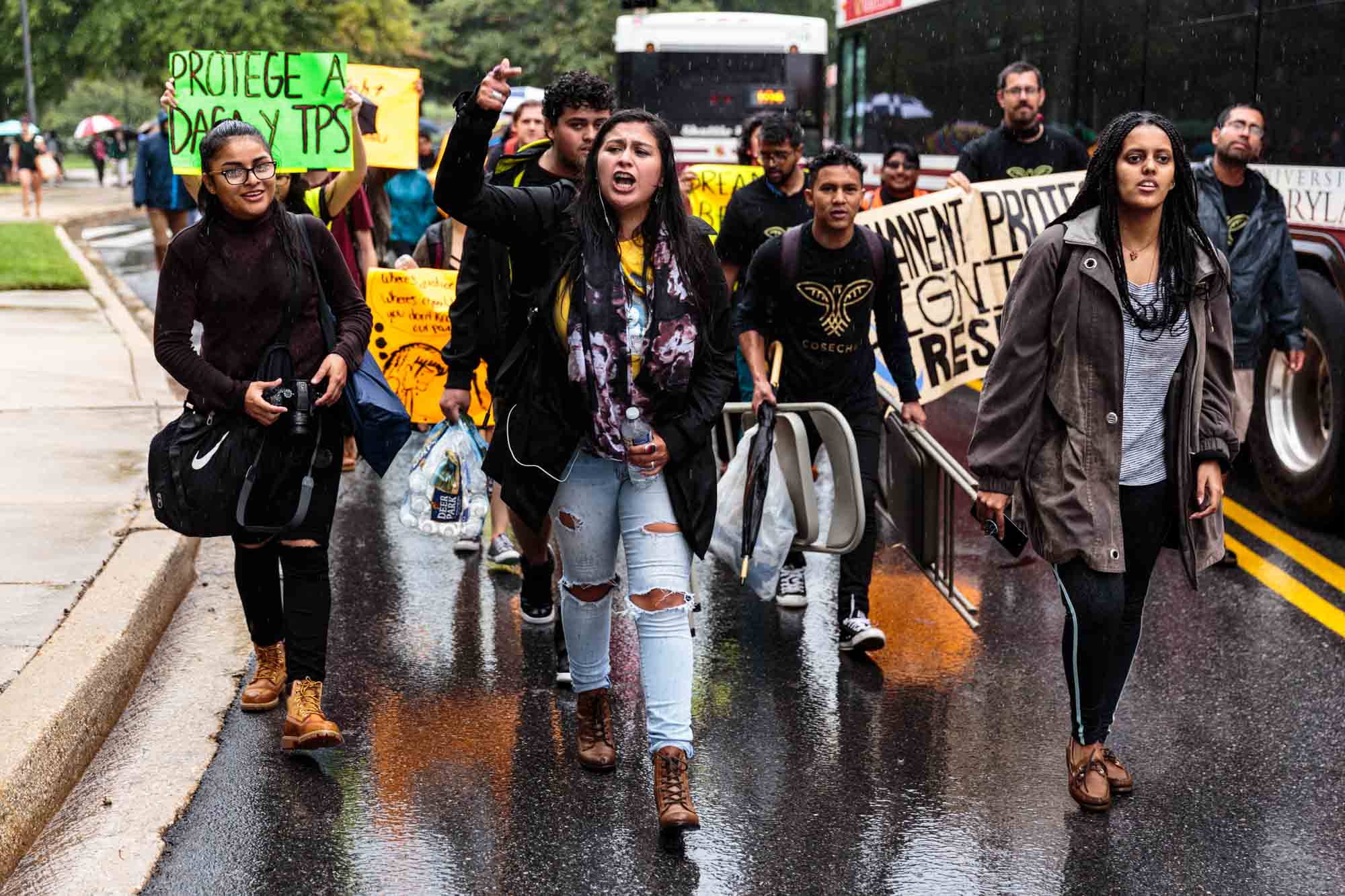Views expressed in opinion columns are the author’s own.
President Trump and his administration announced on Tuesday the end of the Deferred Action for Childhood Arrivals program. DACA covers undocumented immigrants who came to the country as children if they meet certain criteria. Under DACA, the federal government gives these immigrants protection from deportation over a two-year period.
DACA was former President Barack Obama’s controversial response to Congress’ failure to pass the DREAM Act, a piece of legislation based on similar principles. The program’s criteria are applicable to about 1.5 million undocumented immigrants; more than 780,000 have used it to get a chance at higher education and a work permit.
If the policies Trump has advanced in the past couple of months haven’t clearly shown America’s regression, DACA’s repeal certainly will. Ending DACA — a life-changing program to the immigrants who have used it — is not only racist, it’s a step backward in education reform. The repeal is just another way America’s history of failed education policy is repeating itself.
There’s nothing novel about denying education to large groups of nonwhites who have lived in the United States for years. This trend traces all the way back to the late 1800s, when Native Americans were forced into subpar boarding schools.
These young Native American children were prohibited from having long hair, speaking in native languages and expressing any part of their culture. Some were even stripped of their Native American name. It’s nearly impossible to receive a good education with one’s identity under assault, and the individuals who ran these schools barely tried to instruct their students. In many cases, children weren’t taught basic skills like math and English.
Although not completely parallel to DACA repeal, the Native American boarding schools are another example of America treating a minority group as unworthy of a good education.
Native Americans are not the sole victims of racist and regressive education policy. At the turn of the 19th century, the controversial case Cumming v. Richmond County Board of Education defended “a community’s right to choose not to provide public education for black students,” according to The Atlantic. Not only were black parents whose kids were denied public education forced to continue paying taxes, they were also told to move to a district that had segregated schooling, which was another problem altogether.
In more recent decades, large immigrant groups were punished for conflicts happening in their home countries. During World War I, German immigrant students faced a loss of culture when banned from speaking German in schools, universities and libraries. This legal regime remained until 1974, when Congress required schools to accommodate bilingual students through the Educational Opportunities Act.
As a nation that ironically prides itself on free and accessible public education, the United States is now experiencing the most complex of crossroads. The DACA repeal is an issue that intersects classism, racism, immigration and education policy alike. It’s not an easy issue to tackle. It’s not something that can be pushed aside for Congress to take care of, which is precisely what Trump has done.
Policymakers must take this time to reflect on this nation’s appalling history of widespread education restriction. DACA has allowed some of this country’s hardest-working people — including some individuals with whom I walked the halls of my high school — to attain an education. It would be inhumane to take that away.
The repeal of DACA isn’t new or groundbreaking. America has restricted select minority groups from attaining an education throughout history. If anything, that should stun us. We cannot call the United States the land of opportunity when we lack opportunity where it is needed most: education.
Maris Medina is a sophomore journalism major. She can be reached at marismedina29@gmail.com.



